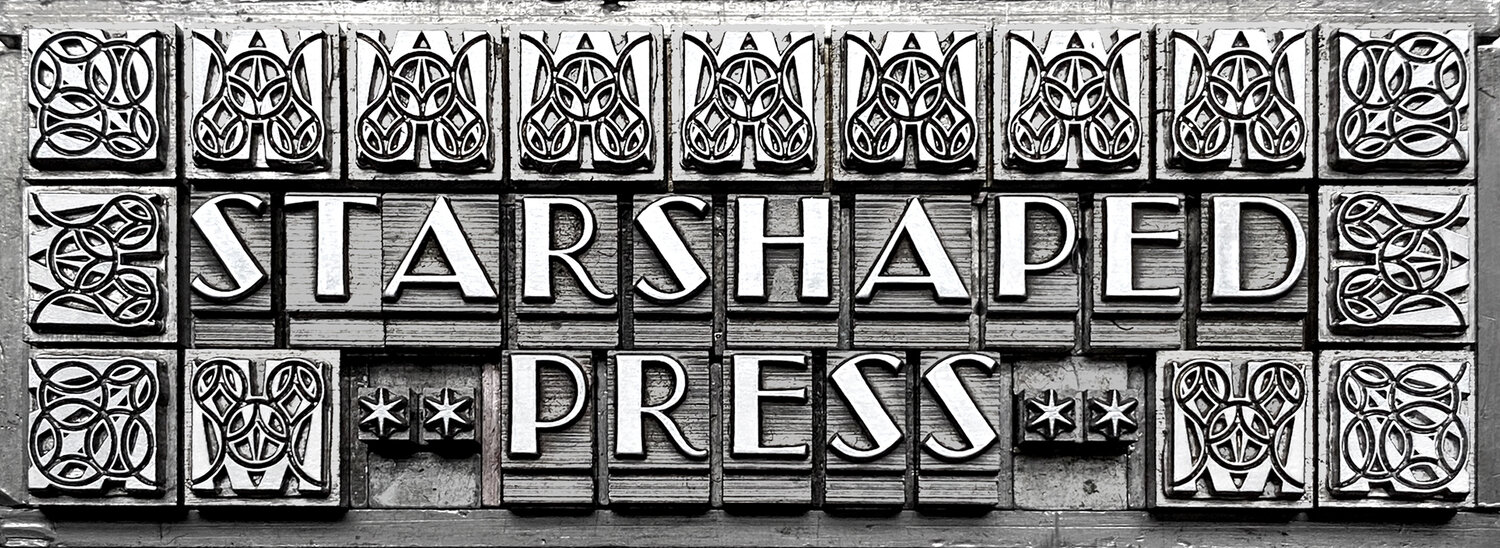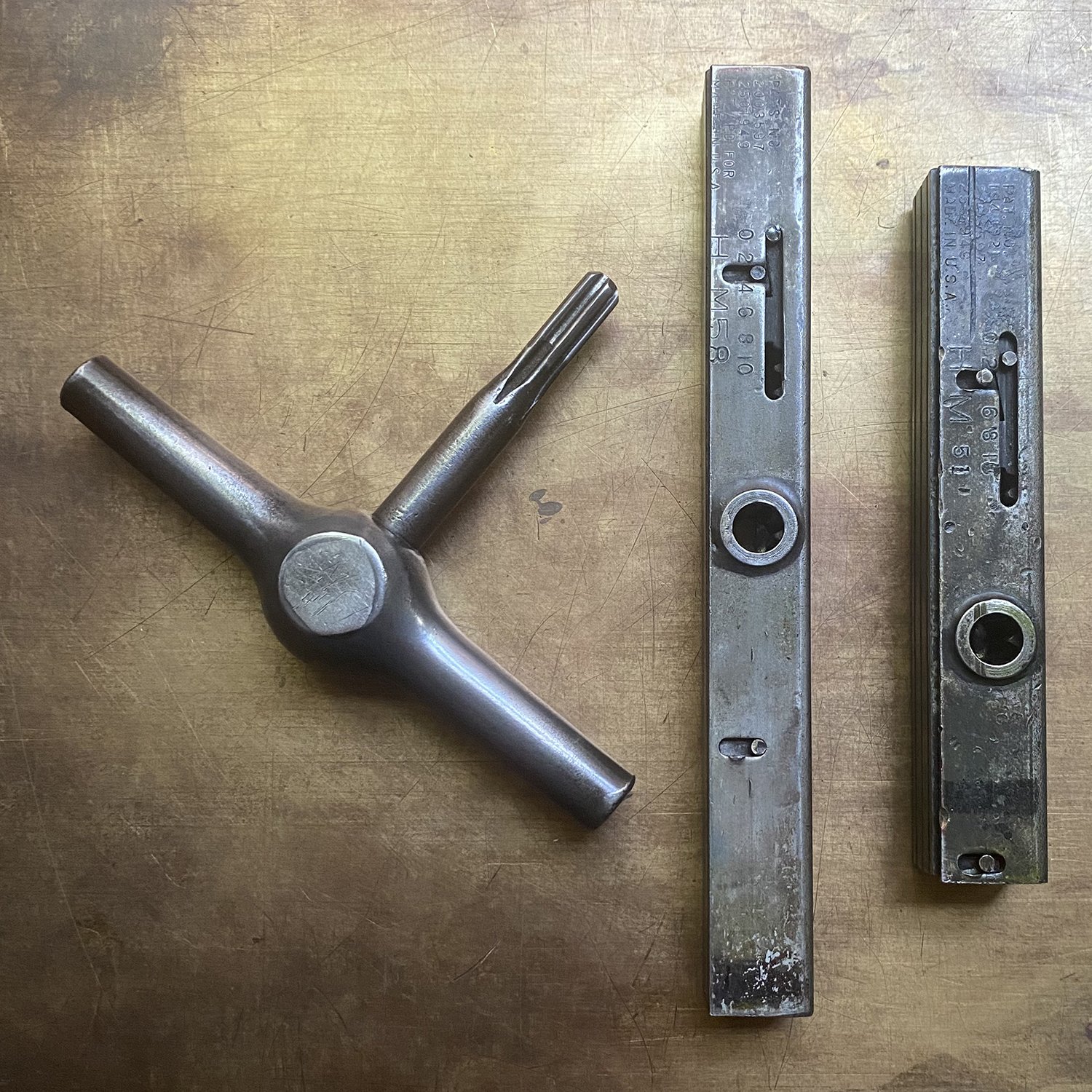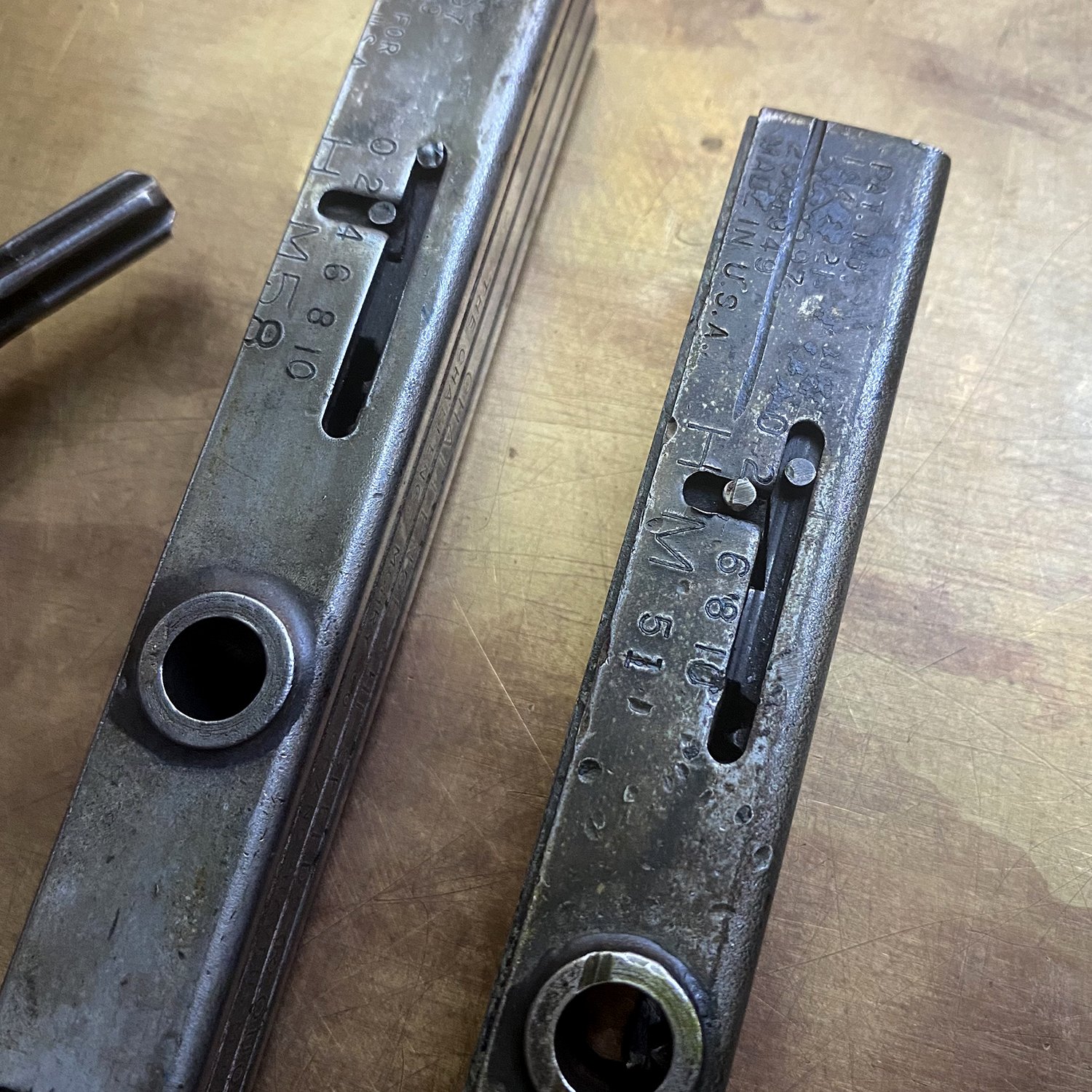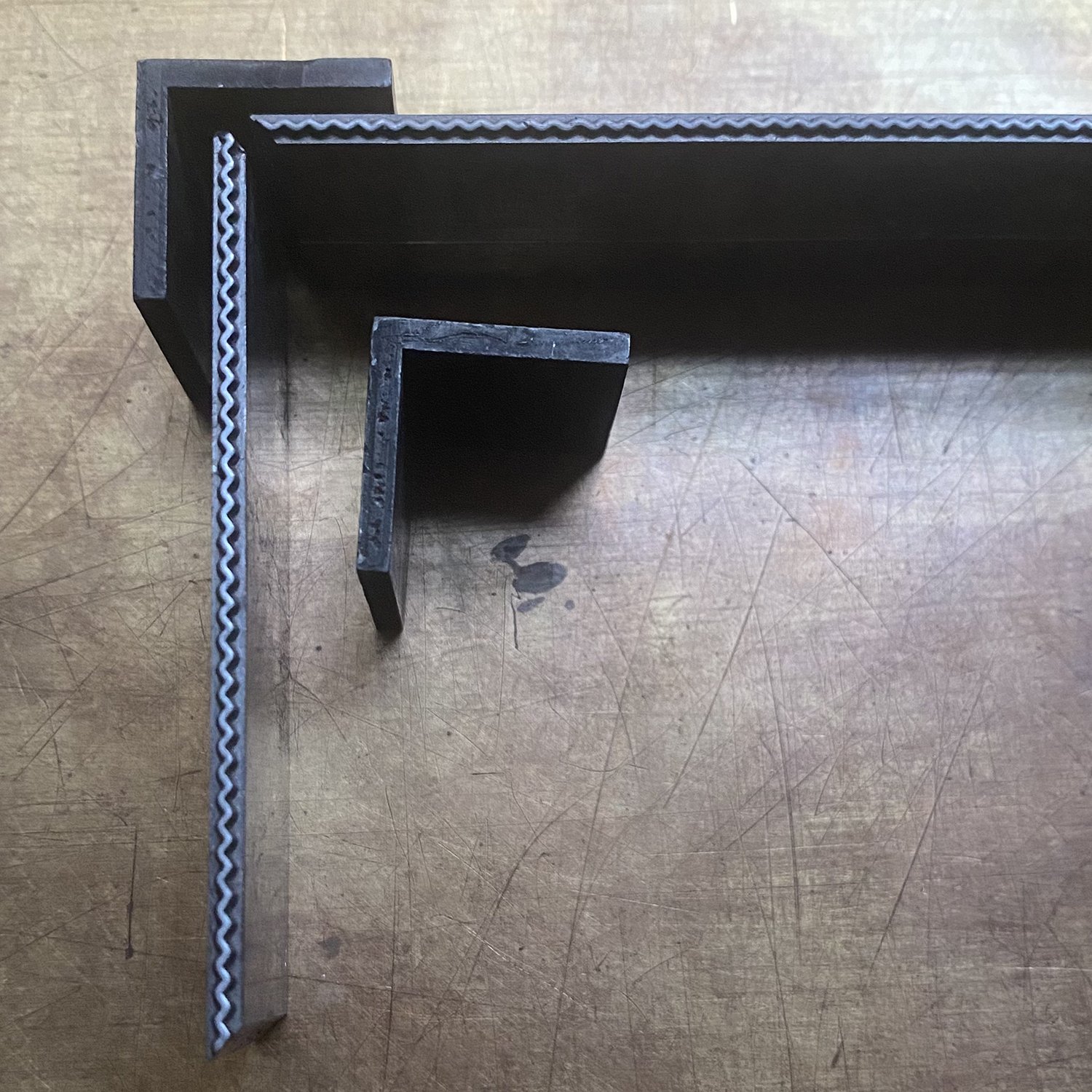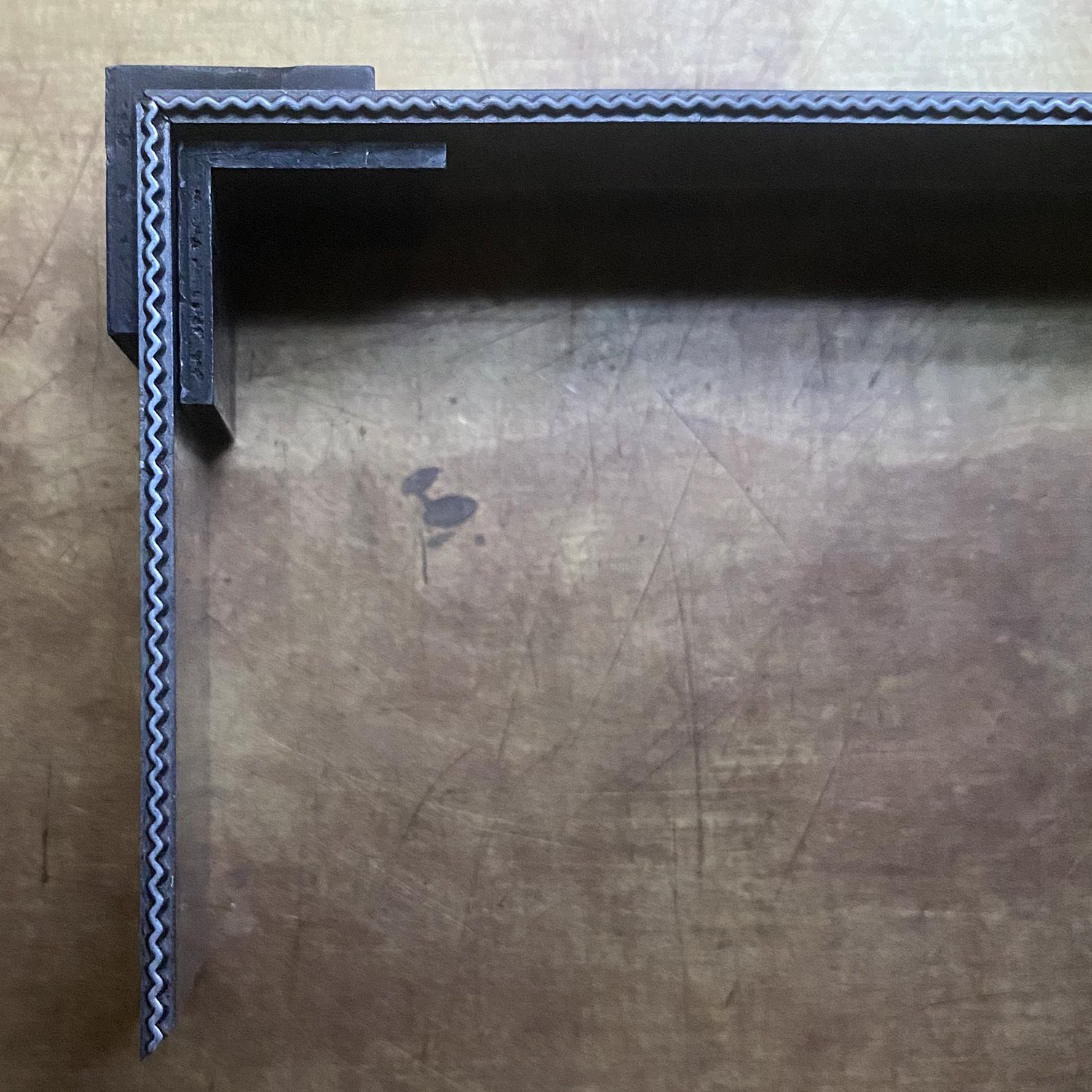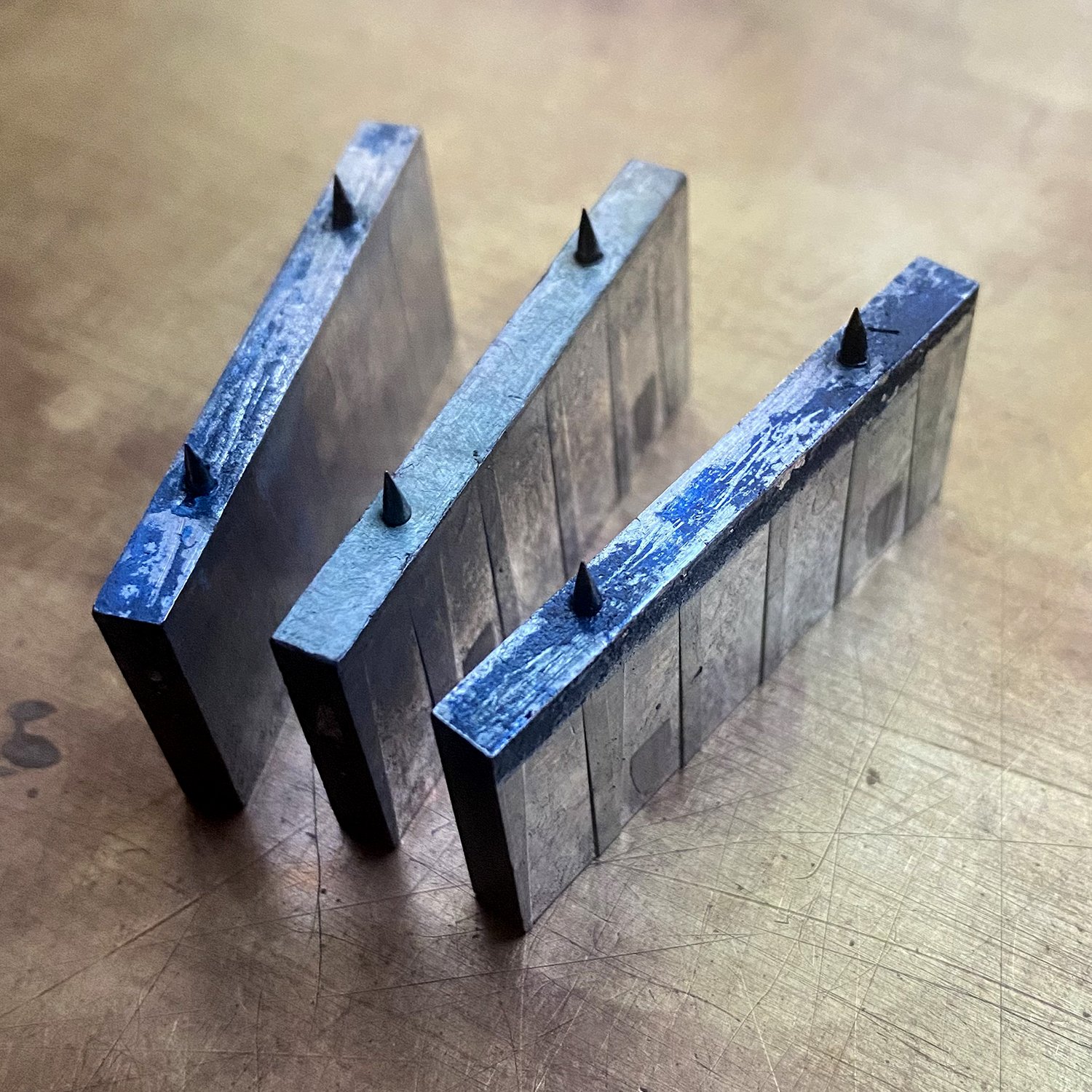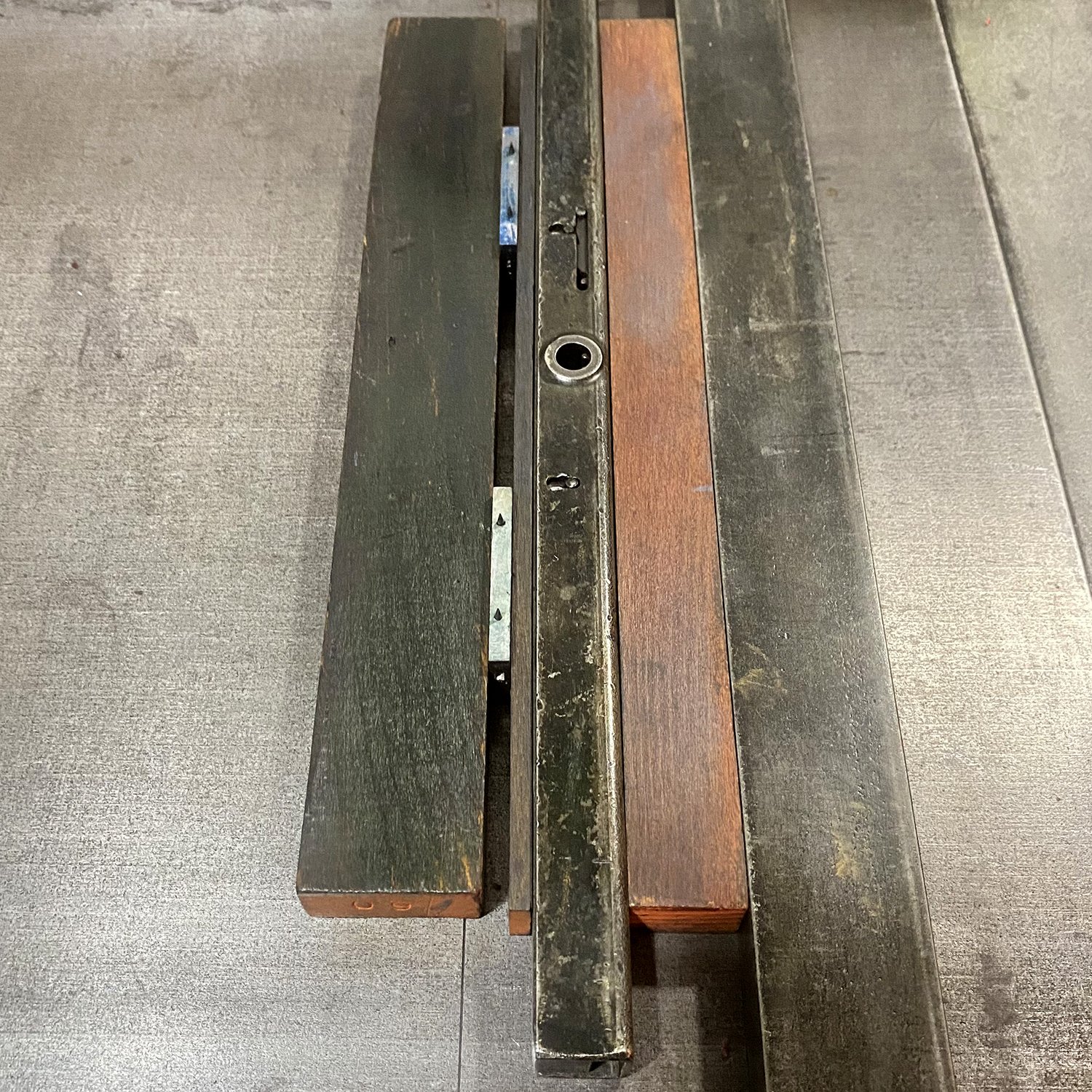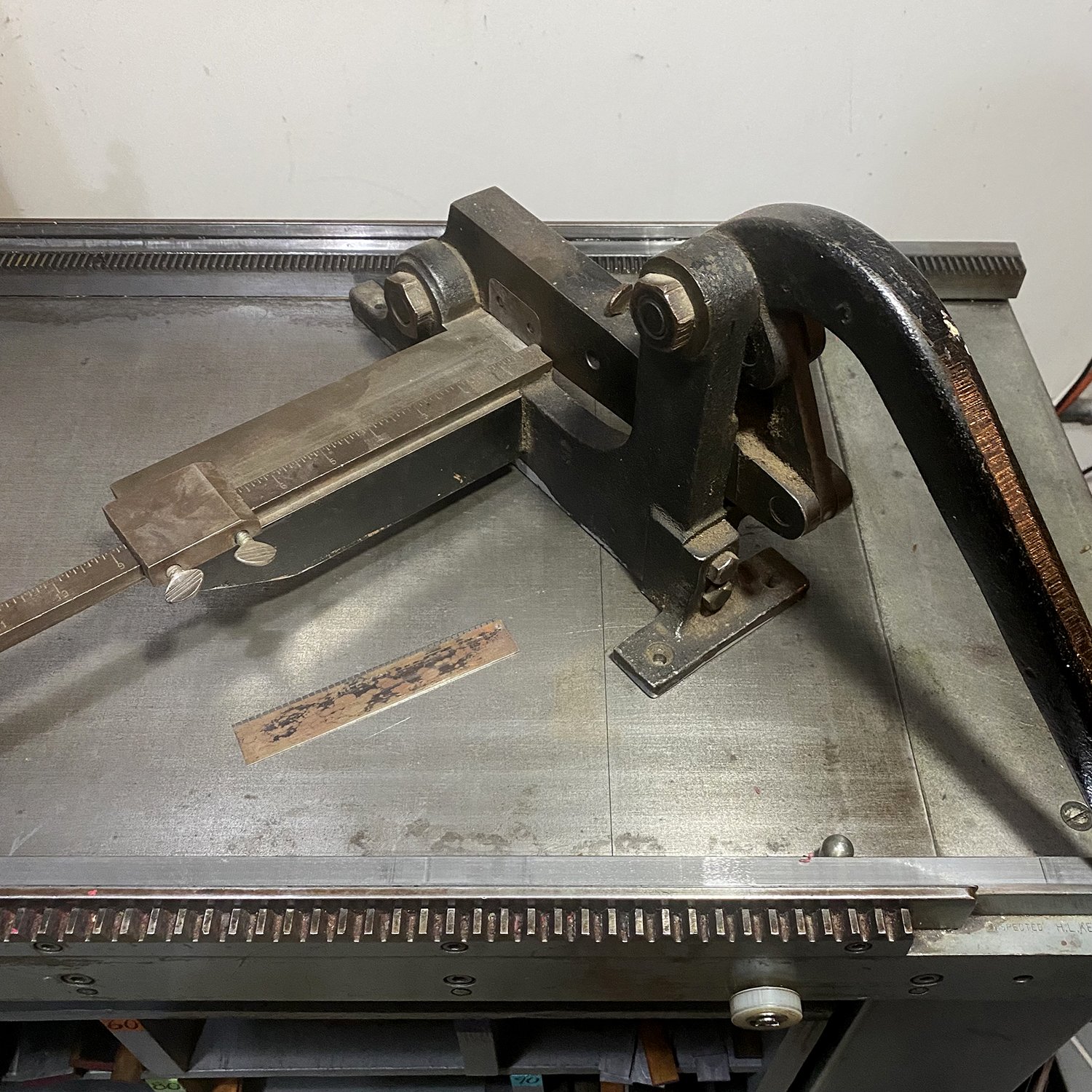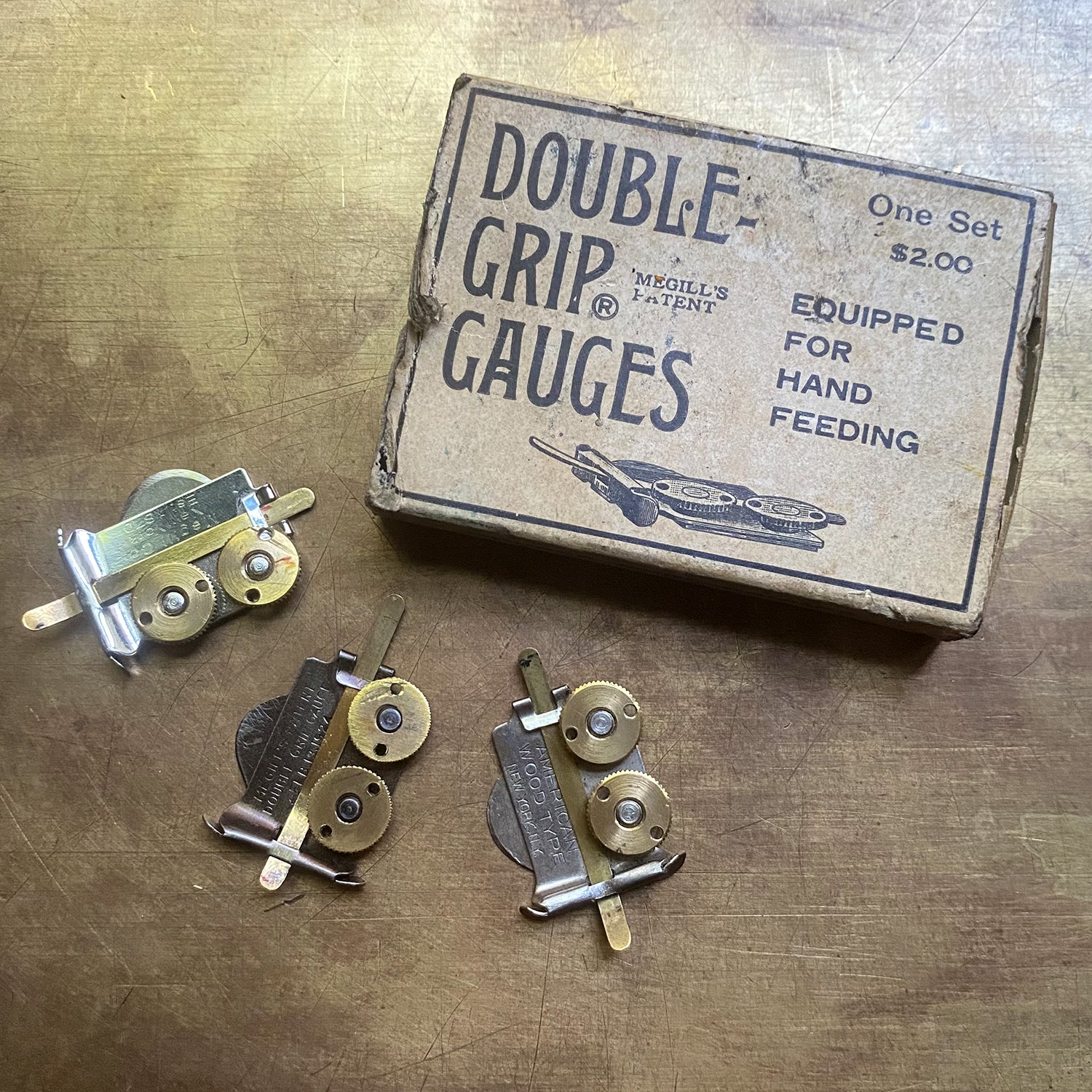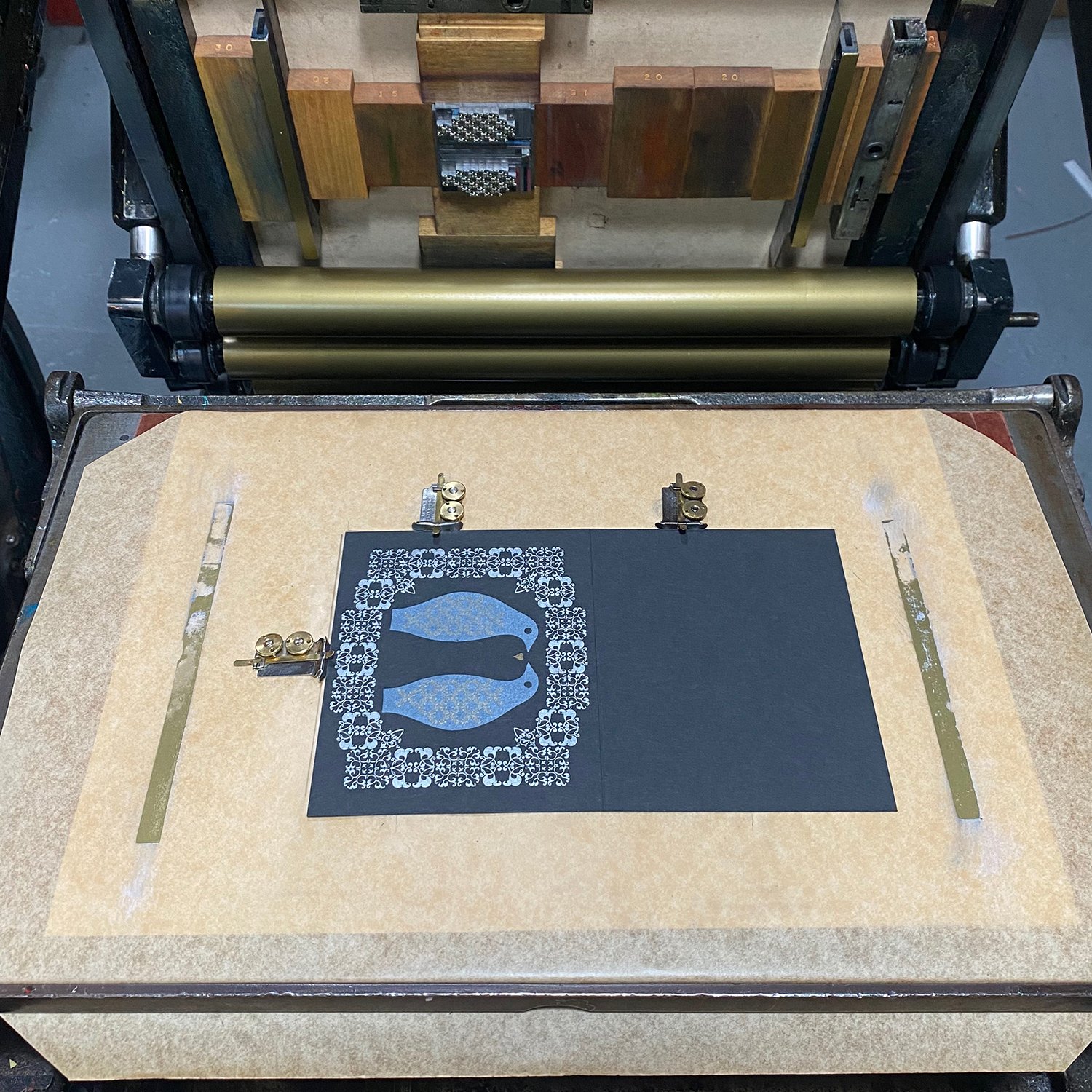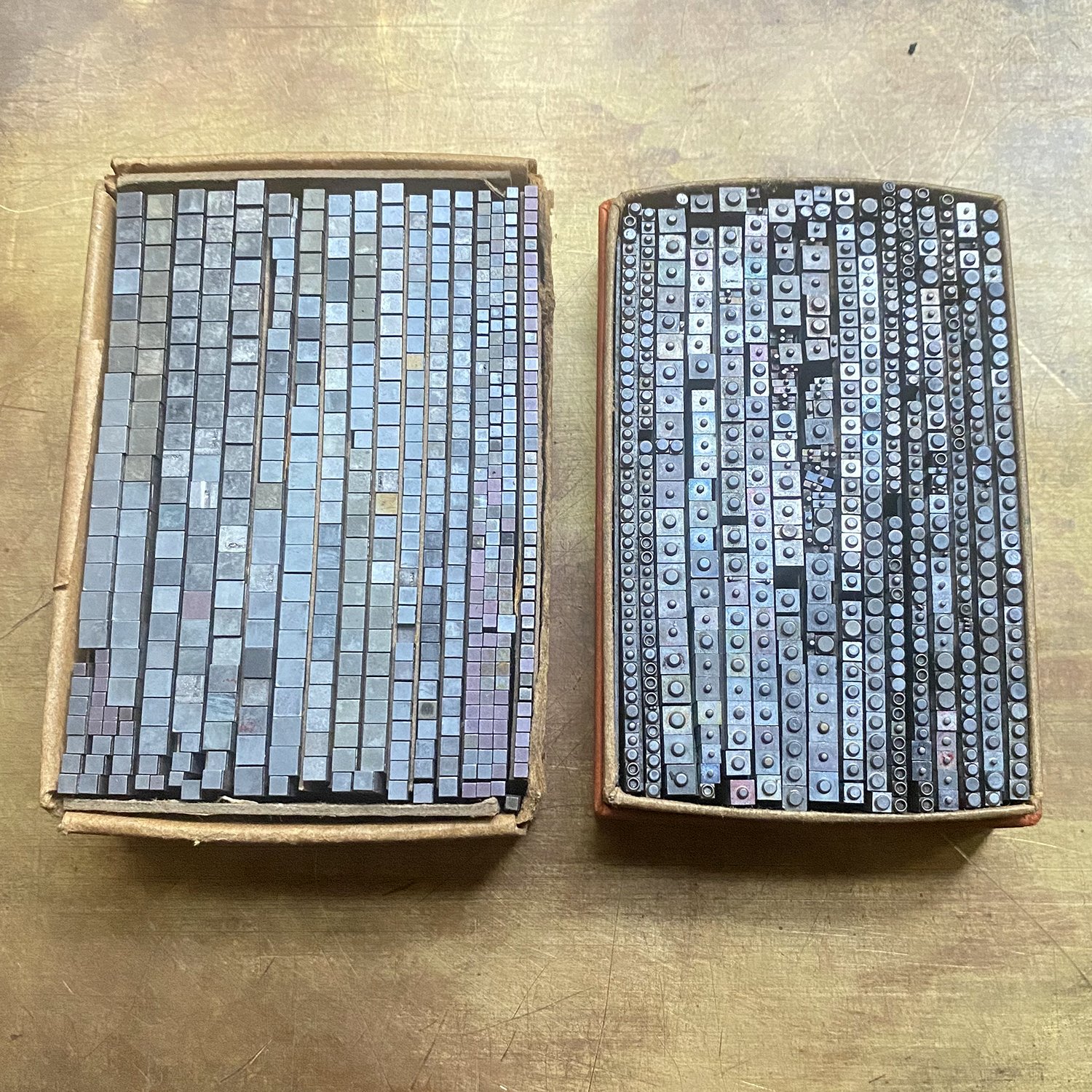Occasionally I get asked about the tools I love best in my shop. It’s usually not the glamorous ones (I see you, rule bender) but the diminutive things that do the hard lifting without getting much credit. I also have seen many of these items go unnoticed at various letterpress sales and fairs, so I hope to point out how valuable they can be.
First up, hi speed quoins! These may be obvious to the regular printer, but they are the best quoins for any press. So tight, so easy, and they have a built in system for always locking up your forms the same way between any tweaks and alterations. I wrote a post about using these numbers for registration.
Next is corner quads! These are easy to overlook as they are not-type-high little L-shaped pieces, but they can literally make your borders come together.
These two pieces of decorative rule are mitered on the end to (hopefully) make a clean transition from one side to the next. Corner brackets are like a little hug for this, holding it together in a firmer way than how you might traditionally set borders.
On to steel points! These little guys can ruin your day if you put your hand down on top of them, but if you set up a system for using them it’s easier to be mindful. They can be used on any press but I have the most experience with them on the Vandercook. Lock them up around the deadline of your press, or wherever your paper is going to end, and these little points will help hold it into place at the bottom of the print where you can often see fishtailing of the paper, losing registration. I like to print a larger sheet and cut down this side of the print so you don’t see the little points they make (not that they’re huge). Paul Moxon is a good source if you need them yesterday.
While we’re on the subject of steel, I really adore my steel rule cutter made by JF Helmold. I have one that was a gift and another picked up as part of a set of tools to make small, angular diecutting rules. Much like slug cutters, these have one job, and it’s to cut the steel and brass that your slug cutter can’t. Mine are secondhand but it’s not hard to find new ones, or keep an eye out at those shop sales. It’s larger and heavier than your average slug cutter and mine has a traditional inch ruler (sure wish it was picas!)
Another tiny workhorse in the shop is metal furniture that’s smaller than the traditional sizes in well-appointed furniture racks. Most of mine lives in two small drawers close to the Vandercook where it gets the most action (and is nearly never organized despite best efforts). It’s especially handy with small wood type, which you can see in this post.
If you print on a platen press, you’re all too familiar with gauge pins. I have, for many years, only used double grip gauge pins because they really have a solid grip on the tympan paper. Cut a slit perpendicular to your paper, slide them in and lock it down. They even have a little key to tighten them but it’s rare I ever have to go that far. These tend to be more expensive than most gauge pins but are worth it!
Last but not least for today’s post are the ubiquitous Handy Boxes! Sometimes these seem a bit passé (I still haven’t found a good use for boxes of fractions other than the once-a-year job that needs one) but don’t overlook the most mundane options! I keep most of mine in one case so it’s easy to see them at once. I’ve gotten a lot of traction from boxes of squares, dots, symbols, math and language accents (check out this post for tips). I once built a whole letterform out of them!
These are just a few of the seemingly little boring things that make life a little easier when you’re digging in on press or with metal and wood type. I’ve seen them all at sales and occasionally online and none are bank-breakers. Next time you’re eyeballing that rare, expensive 19th century typeface on a table at a printers’ fair, remember all the far more useful bits and bobs sitting next to it that you can use weekly for the same (or less!) cost.
